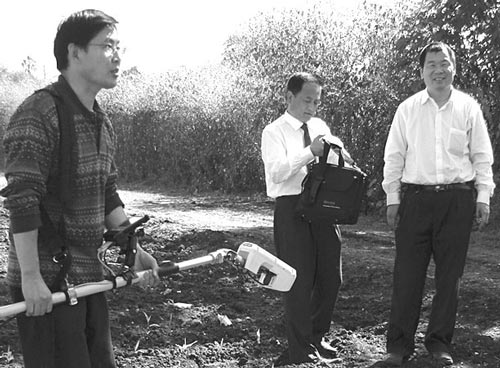CIMMYT being ready saves two Mexican girls: local community in northern Mexico benefits from work of the Security and Hygiene Committee
You’ve heard of collateral damage, but this story is about collateral benefits, according to Iván Ortiz-Monasterio, CIMMYT wheat agronomist posted to Ciudad Obregón, Sonora, northern Mexico. “At 1 a.m. on February 19th, Rodrigo Rascón, superintendent of CIMMYT station operations, left his home to pick up a dose of Toxogonin from the station,” says Ortiz-Monasterio. “He delivered this to the General Hospital of Ciudad Obregón, and it helped save two lives.”
According to reports, three young girls in Chínipas—a small town in the canyons of the Western Sierra Madre of Chihuahua State and best accessed by air in emergencies—had accidentally consumed toxic agrochemicals. One died, and the other two were rushed to the toxicology unit of the Ciudad Obregón hospital. The nearest source they knew of for the antidote was eight hours away, so hospital officials contacted a local provider, who informed them that, given its work and the safety provisions promoted by its Security and Hygiene Committee, CIMMYT-Obregón was likely to have the needed medicine. The chain of urgent communications next led to Jorge Artee, representative of the Agricultural Research and Experimentation Board of the State of Sonora (“Patronato,” for short), a Mexican farmer association that has benefited from CIMMYT research and provided funding and other long-term support to the Center. Artee quickly got in touch with Ortiz-Monasterio, who called Rascón.
Because they take place behind the scenes, the efforts of units like CIMMYT’s Security and Hygiene Committee usually go unheralded, but an emergency like that described here helps remind us of the value of their work. Congrats to Committee members: Isidro Jiménez Olvera, Jorge Montoya Moroyoqui, Carlos González León, Manuel de Jesús Ruiz Cano, Rodrigo Rascón Gamez.
 Chinese journalists Fan Jian (center) of the Science and Technology Daily and Jianke Jiang (right) of the People’s Daily, accompany Xiaofeng Dai, Deputy Director General, Chinese Academy of Agricultural Sciences, as he handles an infrared sensor at the Tlaltizapán experiment station, as part of their visit to CIMMYT during November 28-December 2, 2006.
Chinese journalists Fan Jian (center) of the Science and Technology Daily and Jianke Jiang (right) of the People’s Daily, accompany Xiaofeng Dai, Deputy Director General, Chinese Academy of Agricultural Sciences, as he handles an infrared sensor at the Tlaltizapán experiment station, as part of their visit to CIMMYT during November 28-December 2, 2006.